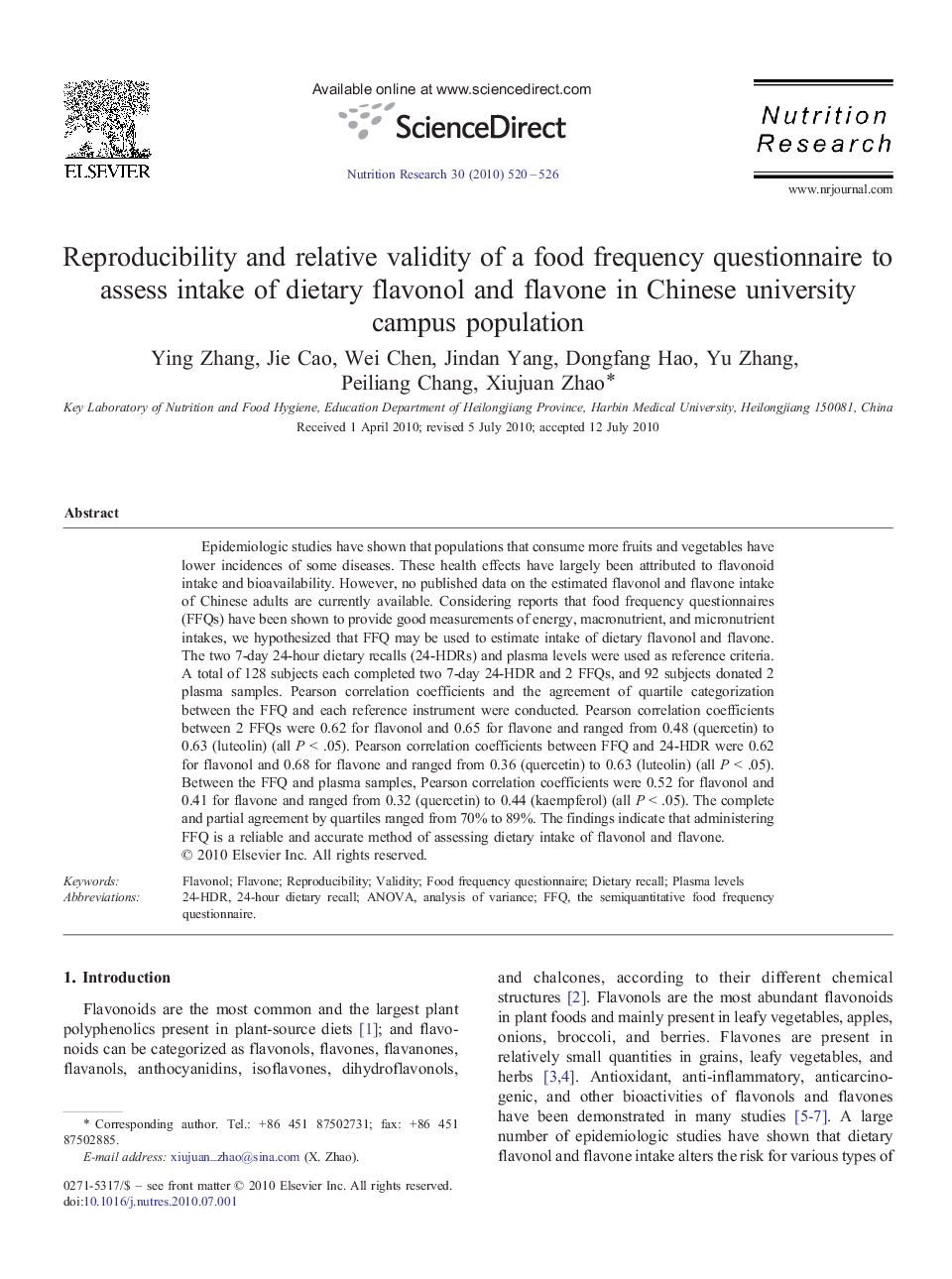| کد مقاله | کد نشریه | سال انتشار | مقاله انگلیسی | نسخه تمام متن |
|---|---|---|---|---|
| 2809201 | 1158023 | 2010 | 7 صفحه PDF | دانلود رایگان |

Epidemiologic studies have shown that populations that consume more fruits and vegetables have lower incidences of some diseases. These health effects have largely been attributed to flavonoid intake and bioavailability. However, no published data on the estimated flavonol and flavone intake of Chinese adults are currently available. Considering reports that food frequency questionnaires (FFQs) have been shown to provide good measurements of energy, macronutrient, and micronutrient intakes, we hypothesized that FFQ may be used to estimate intake of dietary flavonol and flavone. The two 7-day 24-hour dietary recalls (24-HDRs) and plasma levels were used as reference criteria. A total of 128 subjects each completed two 7-day 24-HDR and 2 FFQs, and 92 subjects donated 2 plasma samples. Pearson correlation coefficients and the agreement of quartile categorization between the FFQ and each reference instrument were conducted. Pearson correlation coefficients between 2 FFQs were 0.62 for flavonol and 0.65 for flavone and ranged from 0.48 (quercetin) to 0.63 (luteolin) (all P < .05). Pearson correlation coefficients between FFQ and 24-HDR were 0.62 for flavonol and 0.68 for flavone and ranged from 0.36 (quercetin) to 0.63 (luteolin) (all P < .05). Between the FFQ and plasma samples, Pearson correlation coefficients were 0.52 for flavonol and 0.41 for flavone and ranged from 0.32 (quercetin) to 0.44 (kaempferol) (all P < .05). The complete and partial agreement by quartiles ranged from 70% to 89%. The findings indicate that administering FFQ is a reliable and accurate method of assessing dietary intake of flavonol and flavone.
Journal: Nutrition Research - Volume 30, Issue 8, August 2010, Pages 520–526